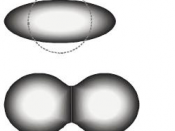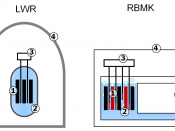Niobium, with a chemical symbol of Nb, is the lustrous light gray ductile metallic element that resembles tantalum chemically, and proves to be an extremely essential yet fascinating transition element. With an atomic number of 41, niobium combines strength, a high melting point, resistance to chemical attack, and a low neutron absorption cross-section. All of this promotes its use in the nuclear industry, especially in control rods of nuclear reactors. The prices of niobium are reasonable too, at a mere $75/lb, and are maintained by the largest producer to avoid market perception of a monopoly situation (Winter). Thus, niobium acts as a key element in nuclear fission reactors, due to its enormous strength, high melting point, resistance to corrosive chemicals, and low neutron absorption.
Generally, niobium is incorporated into nuclear fission reactors due to its enormous strength and low density. It was discovered that the addition of 1% zirconium to niobium greatly improved the overall strength of the alloy over the soft pure metal.
Thus the Nb-Zr alloy became the replacement for pure niobium in applications requiring the chemical resistance of niobium and a material with a high melting temperature. Because of the increasing need for better strengths and the advance of new technologies, Nb-Zr has been replaced by alloys such as C-103, which has greater strength and thus improved reliability, but still retains all the desirable characteristics of Nb-Zr. Although it is now outdated and isn't used as much for its strength anymore, Nb-Zr still has several advantages over other alloys. For example, it is much less expensive than the higher strength Carbon alloys, and can also be used in applications where a high-temperature material is needed with low loads, such as a load-free thermal shield in nuclear reactors. Furthermore, niobium possesses...


